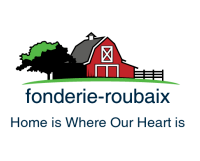
If your environment requires professional pest control, Termite treatment Johor Bahru offers a variety of termite treatment solutions that are specifically designed to give every homeowner peace of mind when facing termite attacks.
When we talk about the impact of pests on the ownership of the property we have, it cannot be separated from the losses generated by termites.
In this tropical Malaysian climate, termites are growing very rapidly and become a scourge for our property investment.
Termite
Termites are widely regarded as destructive pests in many homes or businesses. Termites (also known as ‘white ants’) can cause major damage to building structures if not managed or controlled with the help of a professional termite exterminator.
How to get rid of termites?
Termite infestations can be difficult to spot because termites live underground and eat away at wood from within. This is the reason why enlisting the help of a professional termite exterminator is the most effective way to detect, monitor and control termites on your property.
How to identify termites?
It is important to identify the type of termites that are invading your property. Different types of termites behave and leave different attack symptoms because of their different feeding and nesting habits.
Why You Need Warranty On Termite Pest Control
Home is a place of refuge. Your home insurance may not cover the damage caused by termites? This of course puts you at risk for incurring large costs to repair the cost of damage to your home. If you know your house is infested with termites, of course you need someone you trust to identify and get rid of termites quickly in your home.
These are the Advantages and Benefits of Termite Control in Your New Construction. Not only economic benefits, but also social benefits and indirect benefits for environmental aspects
Protect your property from big losses due to termite attacks, immediately do a Termite Control Consultation at your home or place of business.
4 tips on how to prevent termites at home
Follow these 4 practical tips on how to prevent termites at home:
Quickly repair leaky faucets and pipes – repairing and fixing leaks in pipes can eliminate the damp conditions that termites love.
Don’t allow vines to grow near building structures – vines or trees growing near property structures give termites access into your home undetected.
Remove dead trees and stumps – dead trees and stumps are ideal places for termites to nest. Removing dead trees and embankments is one of the most effective ways to repel termites to reduce the risk of termite attack on your property.
Removing wood debris found around the property – storing wood debris means you provide an attractive food source and a preferred nesting site for subterranean termites.
Signs of Termite Attack Symptoms
Termites do not come out in the open and prefer a dark, damp and protected environment. The presence of termites is very difficult to detect until the symptoms of a termite attack are visible and clear to you.
That’s why an annual termite inspection is so important and we recommend it. Help from a qualified and experienced professional termite exterminator will help you get a comprehensive and thorough termite inspection.
Symptoms of Termite Attack
Termites always want to go unnoticed. They can go for years without being seen on a property and inflict untold damage at the same time.
Before removing termites from your premises, learn about some of the common signs and symptoms of termite infestation that you may see (or hear) around your home or business:
Wood that sounds hollow or feels thin – Termites usually eat wood from the inside out and leave the wood or paint with a thin layer. So, when you tap or press on an area of wood that is infested by termites, it will sound hollow or feel thin because some (or all) of the wood has been eaten away by termites.
Doors feel tight or windows are difficult to open – As termites eat wood, the dirt or ‘mud’ from the termites forms a protective environment that stores heat and moisture in the air. This causes the wood to swell and makes it harder to open windows or close doors.
The appearance of termite droppings in unexpected places – One of the symptoms of dry wood termite infestation is the discovery of brown termite droppings such as sand near window frames, door frames or even on furniture.
Termite mud tubes – Termites build ‘mud’ tunnels to provide a safe environment for their colony to travel as well as protect their food source. These mud tubes are often difficult to detect because they are behind gypsum or underground, but can also be seen on brick foundations of houses or on door and window frames.
The occurrence of cracks in door frames or wood trim – When termites eat door frames or wood siding attached to the top of buildings, they cause loss of structural integrity and cause cracks in some parts of the building. Don’t jump to conclusions too quickly! Because cracks can also be caused by a shift in the building of your house and are not related at all to the presence of termites in your home!
The presence of flying termites or winged termites shedding their wings – The presence of flying termites or winged termites (larons) is the most obvious symptom of termite attack that every homeowner can see.
Impact of Damage by Type of Termite
Different types of termites are unique in how they damage the wood on your property. The explanation below explains the differences in the impact of damage caused between subterranean termites and drywood termites that you can identify at home:
Termites
Subterranean termites feed on wood from the ground up and mostly enter buildings through sub-structures. For signs of subterranean termite infestation, you should look for evidence of damaged wood and the presence of mud tubes. Wood damaged by subterranean termites has a ‘gallery’ (hollow tunnel) that runs along the wood grain because it is judged to be softer and easier for them to eat.
Dry Wood Termite
Drywood termites generally enter building structures through rooflines or through other exposed wood material to begin colonizing. For signs of drywood termite infestation, you should look for clusters of frass on the floor or flat surface under the wood they live in. Frass is dry wood termite droppings that are granular and often vary in color.

